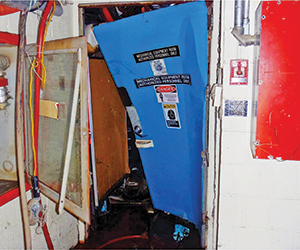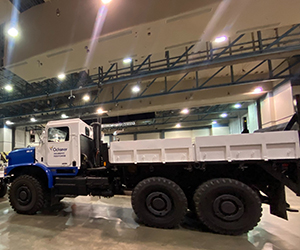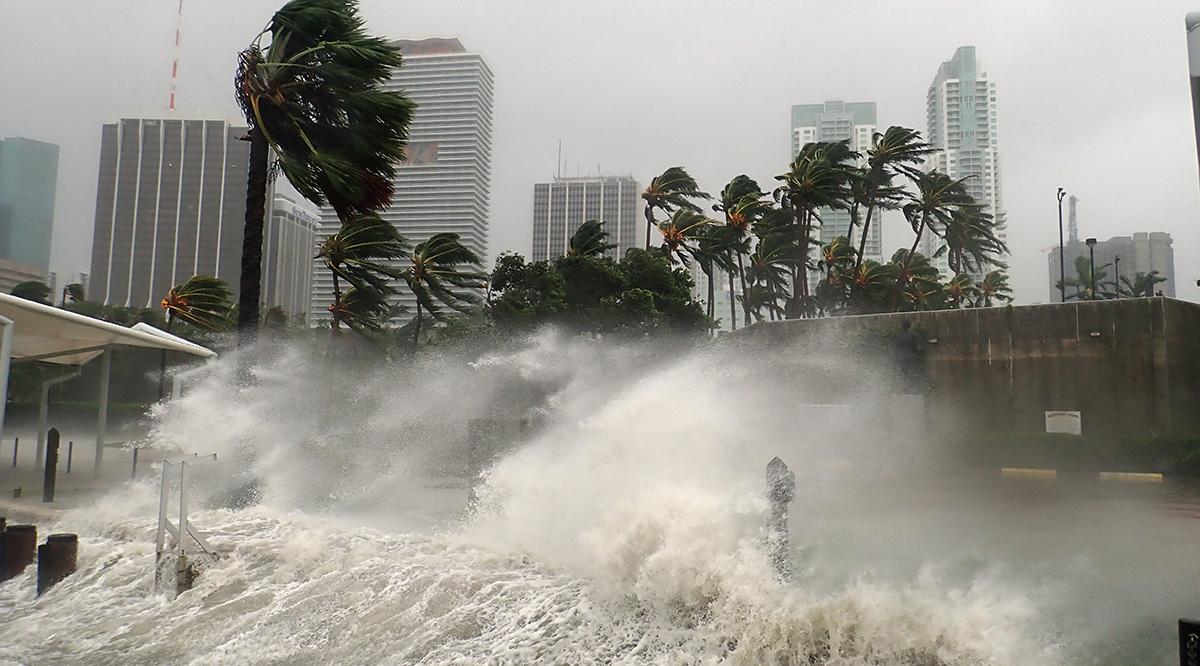When a heat wave blanketed swaths of Washington state last summer with record-busting temperatures above 100 degrees — including a high of 120 — hospitals found themselves setting grim records of their own.
“We saw a career’s worth of heatstroke patients arriving in our emergency departments,” recalls Steven Mitchell, MD, medical director of the emergency department at UW Medicine’s Harborview Medical Center in Seattle. The state reported 100 heat-related deaths in one week.
Since then, hospitals around the state have improved how they help each other care for the onslaught of patients affected by severe weather. “Hospitals cannot manage those surges of patients on their own,” Mitchell says. “Those events are going to be increasing in frequency, and we have to be prepared.”
Hospitals around the country are indeed preparing for more frequent and severe weather events — from heat and hurricanes to blizzards and floods — through upgrades to their campuses, equipment, and emergency plans. In New York, walls arise on parts of the campus at NYU Langone Health to hold back floods. In Madison, Wisconsin, drones alert UW Health to clogged storm drains. In Omaha, staff at Nebraska Medicine strap hospital executives onto medical sleds to practice evacuating patients. In New Orleans, Ochsner Health has a fleet of boats and tall trucks to ferry staff, patients, and supplies during storms.
“The storms are coming more often, and it seems like we’re under the gun more often” to maintain services during severe weather, says Mark Dupuis, chief of security and emergency preparedness at Ochsner Health.
One reason is climate change. With global temperatures and sea levels rising, extreme heat and rainfall have increased exponentially in recent years, and more areas of the U.S. are at risk of wildfires and floods. While it’s difficult to link a specific weather event to climate change, the overall increase in severe weather confirms the consensus of scientists such as those at the Environmental Protection Agency that “extreme weather events such as heat waves and large storms are likely to become more frequent or more intense with human-induced climate change.”
Keeping water out and power on
Hospitals in the path of severe storms have been fortifying their campuses against floods and power outages.
When Hurricane Sandy struck New York City in 2012, administrators at NYU Langone were confident their hospital could withstand the storm. Then the storm knocked out power for the city’s main electrical supplier, and water surging from the East River flooded the hospital’s backup generators. NYU Langone evacuated more than 200 patients as the storm raged.

The hospital has since instituted myriad protections against storms, including the installation of iron-and-steel flood barriers at key areas around campus, such as the loading docks and the entrance to the main lobby. Parts of the system (which includes above-ground barriers and others that rise from below ground) have been activated during nor’easters, says Kelly McKinney, assistant vice president of emergency management and enterprise resilience at NYU Langone. He’s confident that the full system, which takes about 24 hours to get in place, “will protect to a level way beyond what we saw in Sandy.”
In Wisconsin, storms have caused three so-called 500- and 1,000-year floods over the past 10 years. One of them was in Madison and “really tested our systems,” prompting UW Health to improve its response plans, identify vulnerabilities in its outdoor drainage, and better protect its power generators, says James Harrod, director of maintenance and engineering services.
The measures “can be as simple as making sure the [storm] drains are clear of debris,” Harrod says. Drones that survey the campus for potential exterior problems check for standing water near drains — a sign that they might be blocked, which could cause flooding in a severe storm, Harrod notes.
Nevertheless, hospital administrators realize that high waters might occasionally break through their defenses, and storms and heat might knock out power. That’s why systems such as NYU Langone, Ochsner Health, and UW Health have moved critical items from ground or basement levels to higher floors, including power generators, fuel, and expensive and hard-to-replace medical equipment and supplies. “Anything we don’t want to get wet,” McKinney says.
In New Orleans — where hurricanes and tropical storms land just about every year — Ochsner has gone with the flow, so to speak, by buying eight flat-bottom boats and eight high-water trucks of the type the National Guard uses to rescue people in weather emergencies. The tall trucks, which can roll through several feet of water, have been deployed to hospitals in the Ochsner system during heavy rainstorms to get doctors, nurses, and support staff to and from work, and to deliver supplies, Dupuis says. He adds that the system has conducted drills to prepare for moving patients in the trucks and boats during the severe storms for which southeastern Louisiana is known.
Ochsner also dug wells to supply water to its heating and cooling systems in case the city’s water supply is disrupted by a storm, Dupuis says.

Reducing demand, getting supplies
Severe weather often stresses hospitals by increasing demand for services while reducing the supplies needed to meet the demand.
Almost every type of severe weather — rain, snow, heat, wildfires, tornados — brings surges of people to hospital emergency departments (EDs), and not just because of injuries. People come because their power is out; because rain is dripping through their roof; because they’re frightened and EDs are safe.
“We have people coming to charge cell phones,” Dupuis notes. “You have homeless people coming in. People with special needs, maybe an elderly person who’s on oxygen and can’t evacuate on their own.”
Hospitals try to head off those surges as storms approach, through public information systems and collaborations with other institutions. In Washington, UW Medicine puts out messages through local public health agencies, the news media, and social media asking people that “unless you have an acute medical problem, please stay away from the hospitals,” says Mitchell, the ED medical director.
When fires at two electrical substations in Madison, Wisconsin, knocked out power to much of the city during a heat wave in July 2019, hospitals there faced a potential onslaught of residents from nursing homes and assisted living communities “coming to the ED for heat-related stress,” recalls Michael Holman, manager of safety and emergency management. He says the hospitals shared their concerns with the county Emergency Operations Center, which set up cooling centers where those residents and other people, such as those without permanent homes, could escape the heat.
Even when hospitals withstand a storm, the damage done to surrounding businesses and transportation networks can make it difficult to get necessary medical supplies, food, fuel, and water. Some have devised redundant ways to get deliveries right before and after storms, such as “hurricane orders” to bring in enough resources — like water for drinking and sanitation — to last from several days to more than a week.
Ochsner has plans to get diesel fuel for its generators delivered not only by its regular supplier, but also with the help of the National Guard and by barge up the Mississippi River if necessary, Dupuis says. During Hurricane Ida last summer, its hospitals had enough diesel fuel, but the gas pumps at most stations in the area were empty, he says, making it difficult for staff to get to and from work. Ochsner arranged for a fuel company to bring gasoline trucks to its campuses.
“Our CEO was out there pumping gas into employees’ cars,” Dupuis says.
Moving patients
To prepare for when they might get overburdened by a surge in patients during disasters, many hospitals have arranged formal agreements with wider networks of other hospitals to quickly accept patient transfers. This can involve a few patients to lessen the load or an entire evacuation.
“We have stronger connections with other hospital systems, so we have a much more rapid way to determine where we can send patients,” McKinney says of collaborations that have been strengthened since Hurricane Sandy knocked out power at NYU Langone.
University hospital systems in several states, such as Washington and Oregon, have taken the lead in establishing coordination centers through which hospitals can help each other manage high demand for acute care during community or regional emergencies. Several of these efforts were developed for COVID-19 surges, but plans are to make some of them permanent in order to handle all types of disasters, including severe weather. The Department of Health and Human Services has provided guidance for states to develop such systems.
To move patients quickly and safely, health systems have built more details into their emergency weather plans and are conducting more drills. Those plans include both evacuating buildings and moving patients to safer spaces within their buildings — such as to interior areas away from windows during hurricanes and tornados.
Tornados are a common threat for Nebraska Medicine in Omaha, where the annual emergency drills have grown more precise to identify the order in which certain patients get moved, establish the roles played by each staff member, and speed up the process, says Shelly Schwedhelm, executive director of emergency management and biopreparedness.
“We put our executives in med sleds” to play the role of patients, Schwedhelm says. “We take them down stairwells. That’s become kind of a fun thing.”
Staff have grown increasingly aware of the need for the drills as tornado warnings are being issued well outside the traditional tornado season of spring to early summer — they’ve been issued even in December, Schwedhelm says. Although changes in the frequency of tornados have not been linked to climate change, the increase in severe weather events of all types has made everyone more aware of the need to prepare.
“Whatever is the cause, we’ve got to deal with it,” Dupuis says. “We’ve got to be prepared because we’ve got to take care of our patients and people.”

